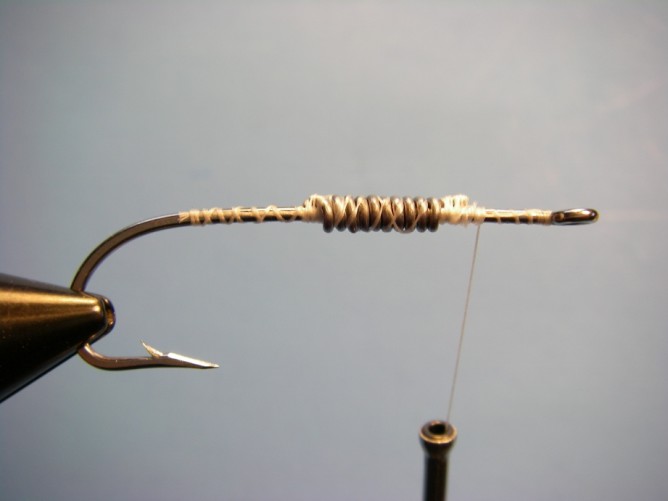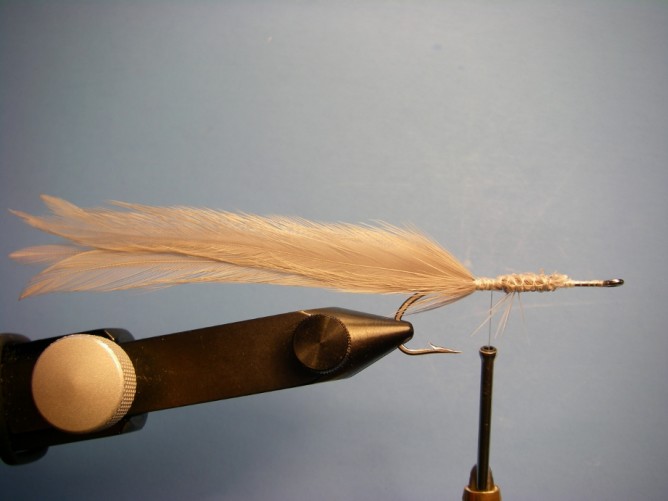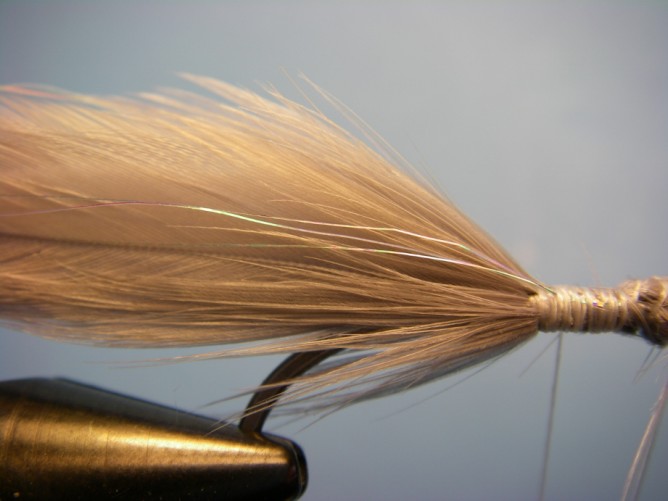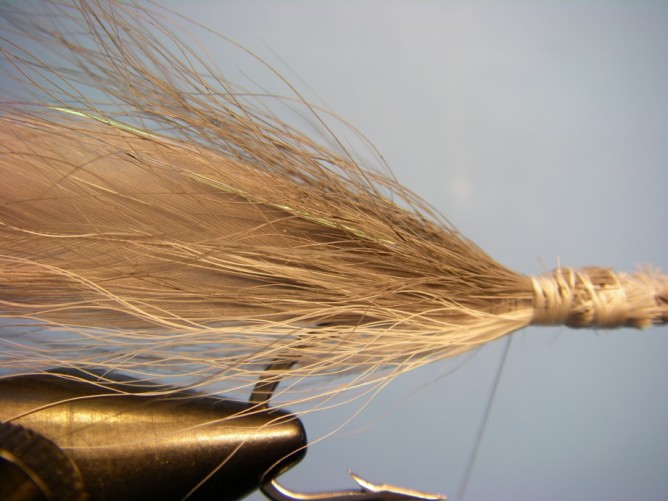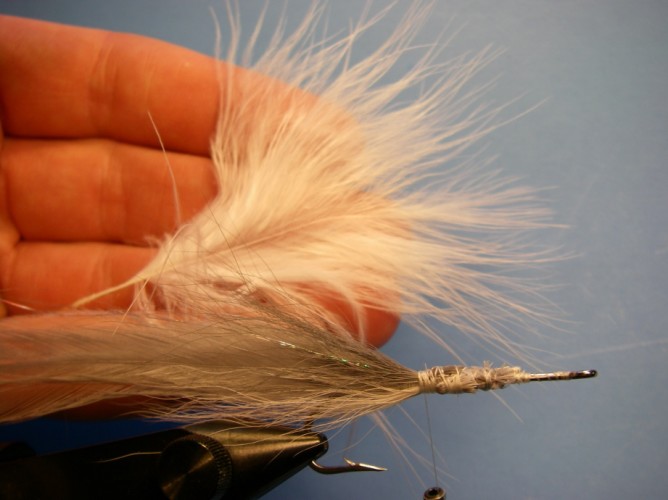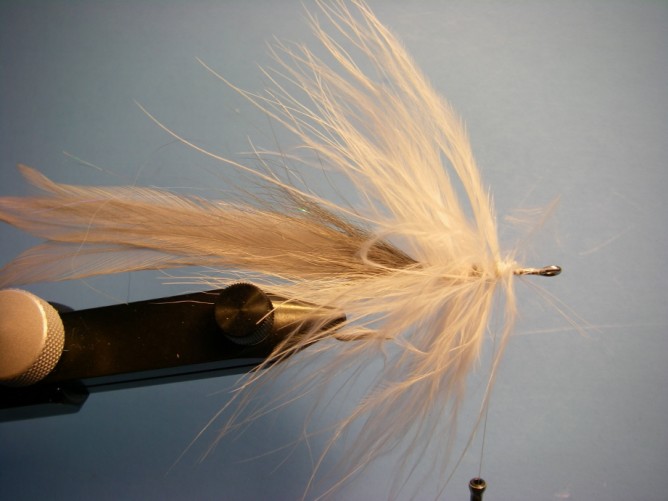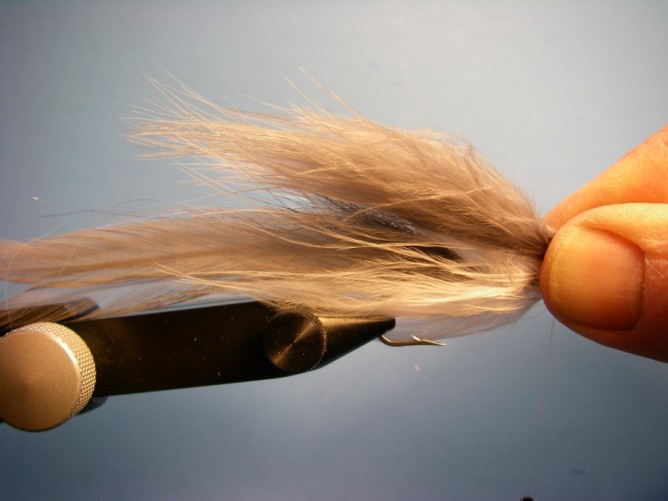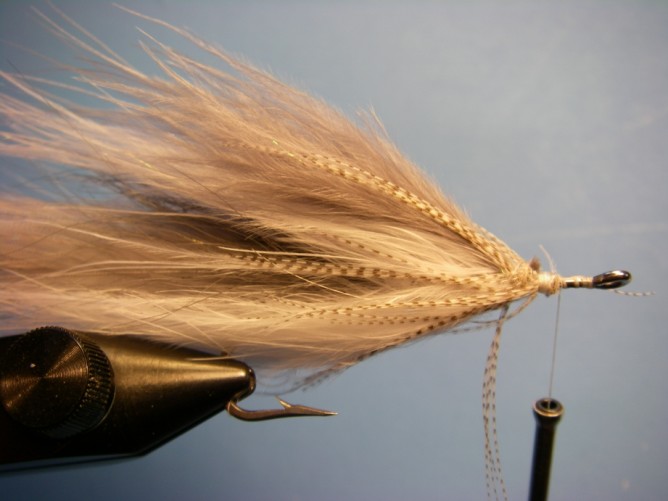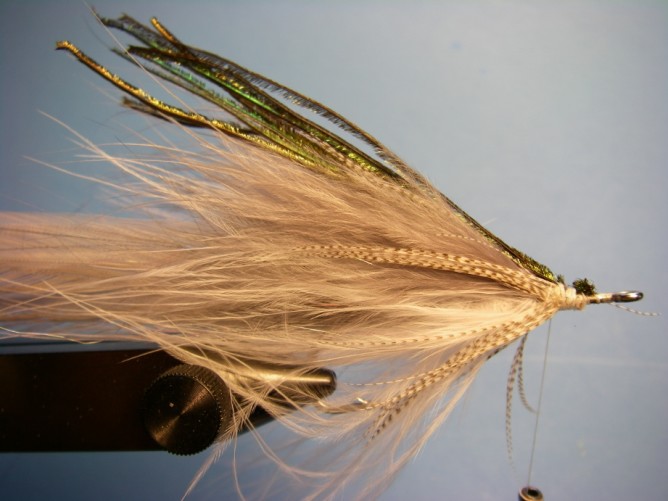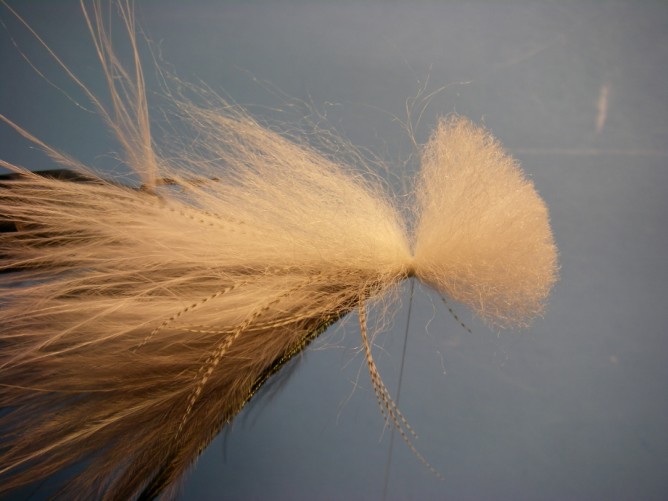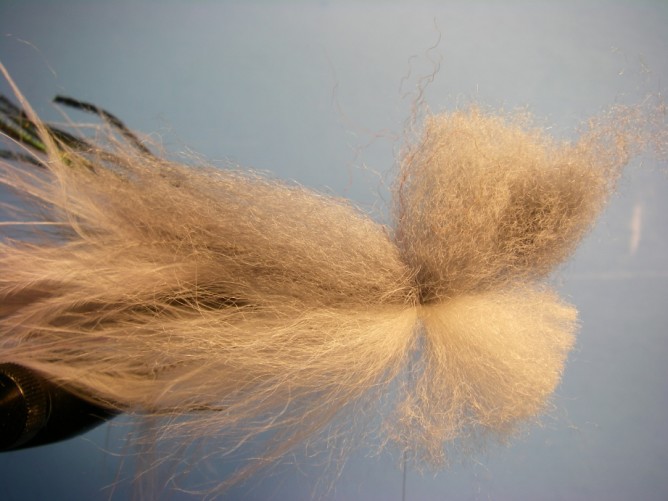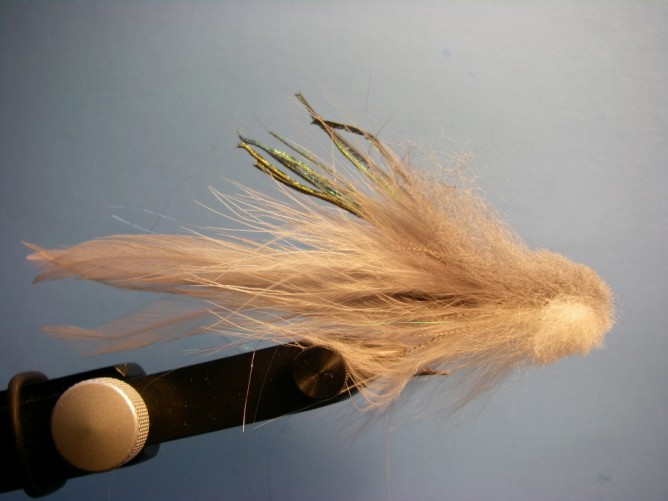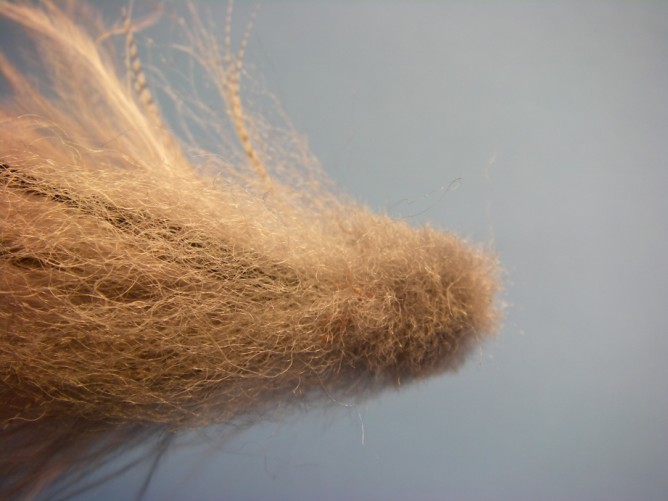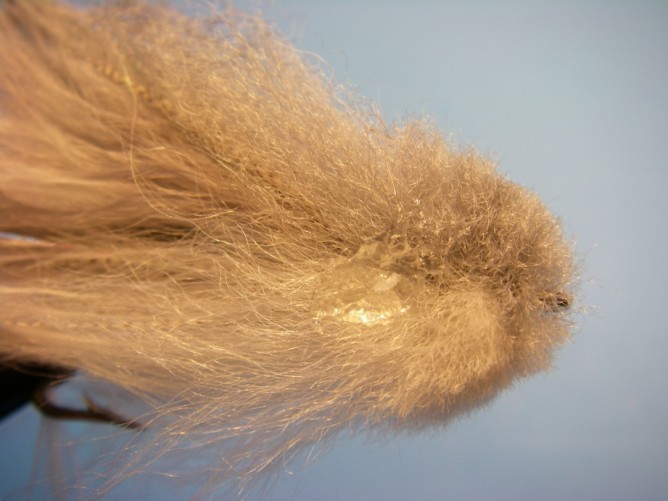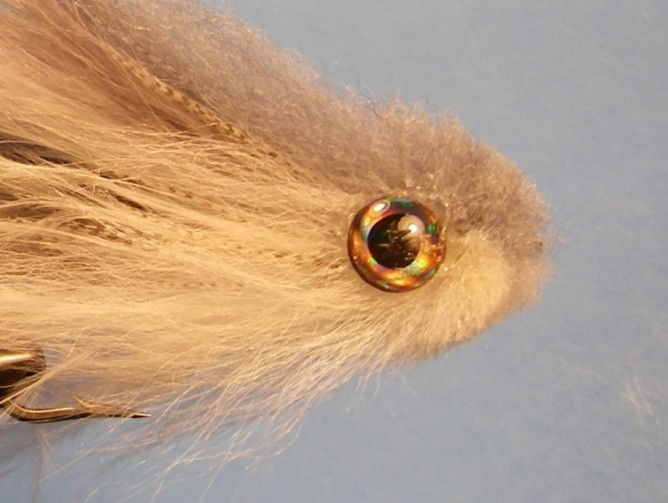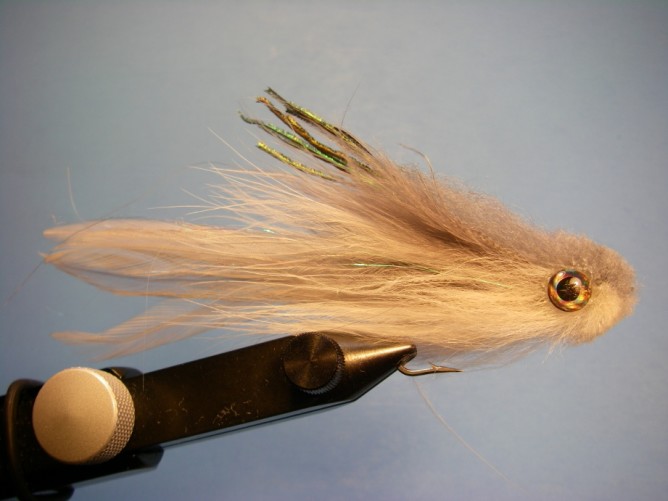Okay, admit it, you’re curious about the buzz these fish have brought to the sport of fly fishing, aren’t you?
Once considered a trash fish, anglers who have pursued them with the fly and fly rod have developed a respect for these brutes. While not exactly like a bonefish as some have claimed, I like to compare them to Redfish. When hooked, it’s similar to being attached to a big truck — they pull hard and steadily while showing you what color your backing is, often a few times before landing them. But the fight is only part of getting your “carp on a fly” fix.
Getting these fish to eat is not what you might think. They demand well-presented flies and the right fly pattern. Like most species of fish, you can have days when they are “on,” but more often than not, you need to get them to eat. This is where the fun and challenge is, and knowing when and where pays off.
As Featured in Simms Midwest Tour
RA Beattie hooked up with Current Works guide Ted Kraimer and The Northern Angler‘s Brian Pitser to fish the flats of Grand Traverse Bay for Simms Midwest Tour video series. Watch this short clip for a first-hand look at Traverse City area carp fishing.
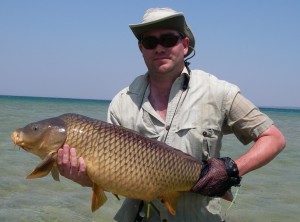 When & Where
When & Where
The season for carp on the flats of Grand Traverse Bay and Lake Michigan ranges from mid-May through mid-July. Weather and hence water temperature are a big factors determining success in finding fish; you might find them happily eating on a flat one day and few fish there the next day not eating. You must get to know their idiosyncrasies to be successful with carp fishing day after day. Since the carp season tends to overlap our best dry fly and hatch season for trout, consider fishing subsurface in the day for carp, then fish the Boardman or Upper Manistee river with dries for trout in the evening.
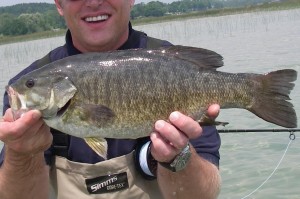 Bonus Fish
Bonus Fish
Often, Smallmouth Bass can be found in the shallows and flats looking to eat. Considered one of the best Smallmouth fisheries in the country, Grand Traverse Bay, both East and West, produce fish over five pounds. They are not only are exciting to fish to, but also to bring in with their ability to jump out of the water.
Equipment
Like a number of saltwater species, I prefer to use 7 – 9 weight rods with Scientific Angler’s Redfish fly line, saltwater tapered leaders with fluorocarbon tippets. Crayfish and nymph patterns are my personal favorite patterns to use. These same flies are also preferred by the Smallmouth Bass that often “swim with the fishes” with my first choice always being a crayfish pattern.
This is no place for a beginner to learn to cast. Simply put, you must be able to cast anywhere from 20 to 45 feet with accuracy and often into wind. What makes this different from saltwater fishing is that you won’t need to wash your tackle free of any salt – the bays of Lake Michigan are pure, freshwater.
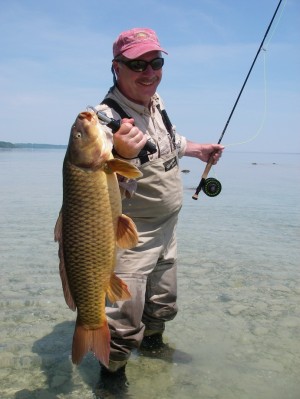 As the water temperatures warm, some clients choose to wet-wade rather than wear waders. It is usually a good idea to be prepared for both, based on the ever-changing temperatures. Sometimes we need to wade above the belt and when the water is cool, well, you know.
As the water temperatures warm, some clients choose to wet-wade rather than wear waders. It is usually a good idea to be prepared for both, based on the ever-changing temperatures. Sometimes we need to wade above the belt and when the water is cool, well, you know.
Thanks to Dave Whitlock and his articles in Fly Fisherman magazine (“Golden Ghosts,” July 1998 and “Golden Ghost II,” September 2008) for bringing more attention to this great game fish and their possibilities with a fly rod.
I have introduced more than enough skeptical trout anglers to the carp through guiding. They were more than surprised at how much fun and challenging these goldenbones are to fish for — book a day and try it for yourself.
- Wading Grand Traverse Bay
- School of Carp
- Holding on


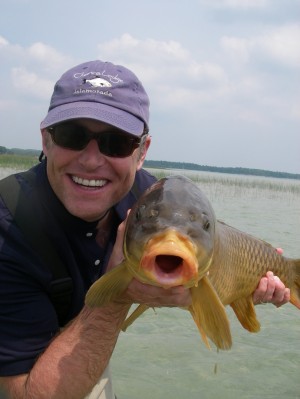
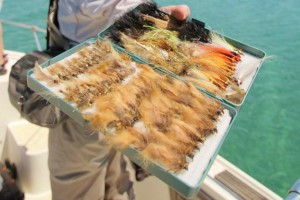
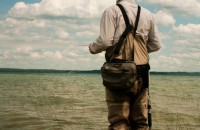
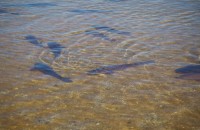
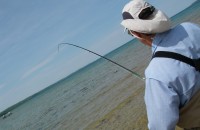
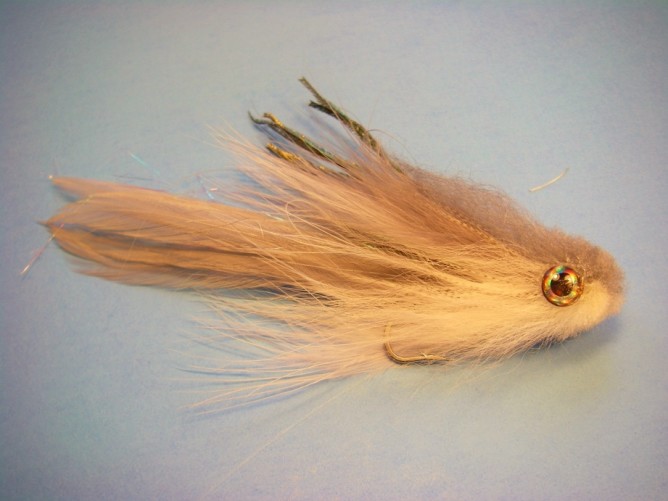
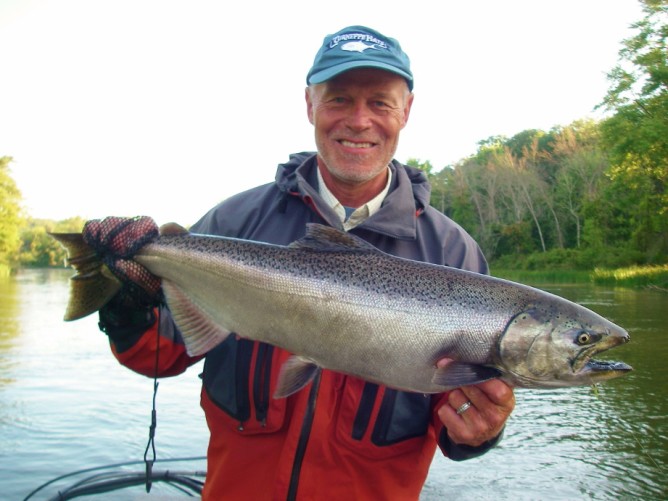
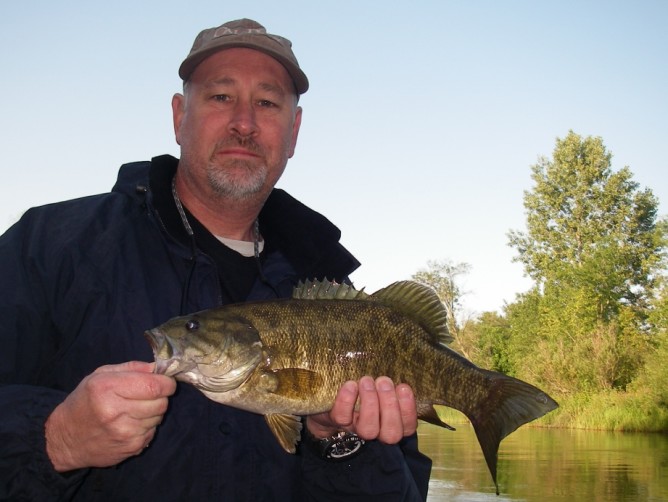
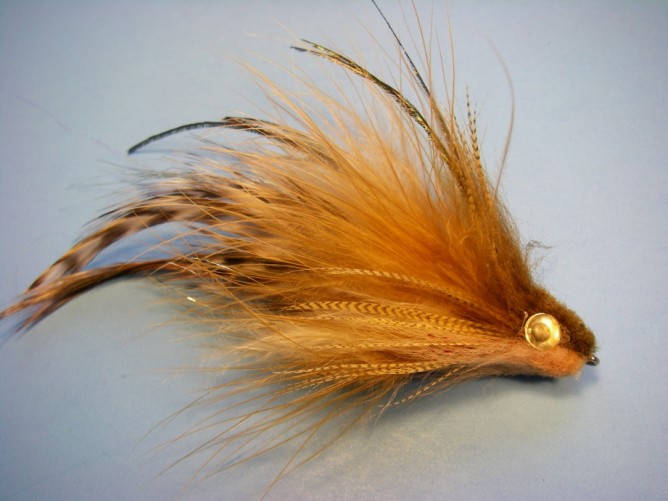 Hook: Mustad S74SNP #1
Hook: Mustad S74SNP #1